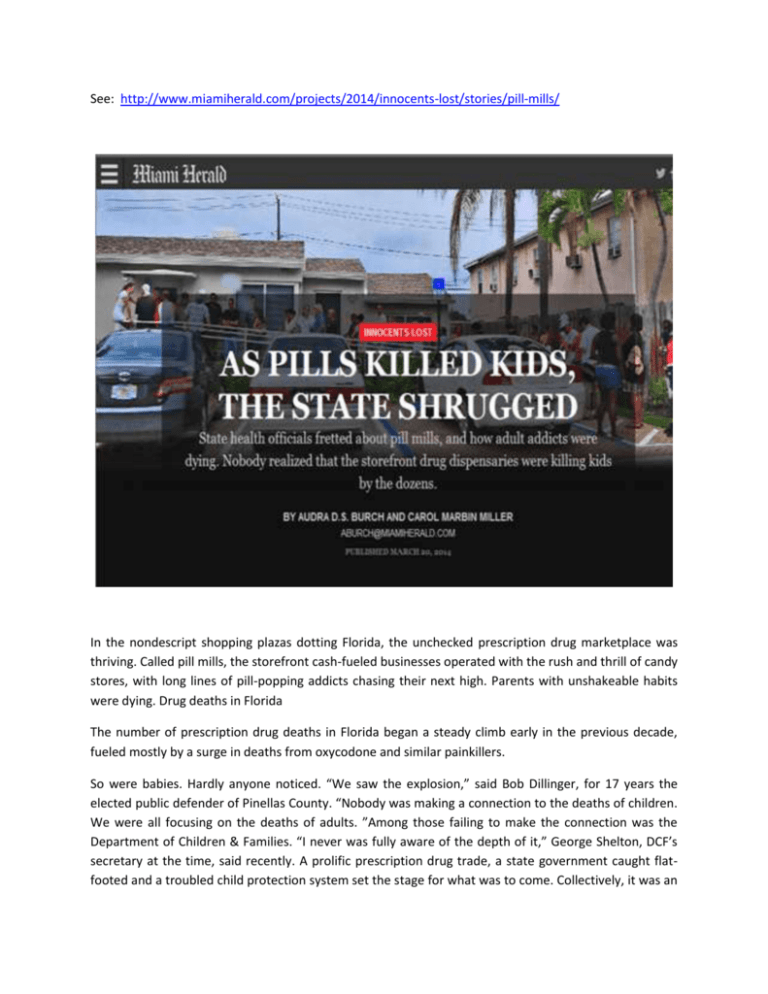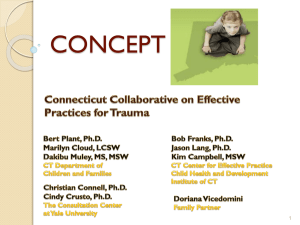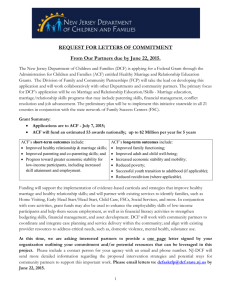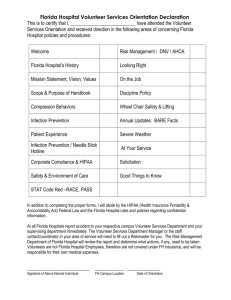Miami Herald - TrustedPartner
advertisement

See: http://www.miamiherald.com/projects/2014/innocents-lost/stories/pill-mills/ In the nondescript shopping plazas dotting Florida, the unchecked prescription drug marketplace was thriving. Called pill mills, the storefront cash-fueled businesses operated with the rush and thrill of candy stores, with long lines of pill-popping addicts chasing their next high. Parents with unshakeable habits were dying. Drug deaths in Florida The number of prescription drug deaths in Florida began a steady climb early in the previous decade, fueled mostly by a surge in deaths from oxycodone and similar painkillers. So were babies. Hardly anyone noticed. “We saw the explosion,” said Bob Dillinger, for 17 years the elected public defender of Pinellas County. “Nobody was making a connection to the deaths of children. We were all focusing on the deaths of adults. ”Among those failing to make the connection was the Department of Children & Families. “I never was fully aware of the depth of it,” George Shelton, DCF’s secretary at the time, said recently. A prolific prescription drug trade, a state government caught flatfooted and a troubled child protection system set the stage for what was to come. Collectively, it was an incubator for child deaths. Since 2008, 123 children have died after DCF had been told that one or both parents were abusing prescription drugs, a Miami Herald investigation found. More than 85 percent of the children were 2 or younger. Jacob Langston / Orlando Sentinel Law enforcement officers outside a pill mill near downtown Orlando on June 3, 2011.Oxycodone, Xanax, methadone and other prescription meds were found in the stomachs of deceased infants and toddlers or in the urine of their parents. Parents accidentally smothered their babies in bed while under the influence. They left pills where their kids could get to them, swallow them and overdose. Some children drowned while their parents slept off their highs. They were as young as Jaiden Washpun, whose mother was arrested for doctor-shopping — dashing from doctor to doctor in search of multiple prescriptions — the day before he was born. He suffocated in bed 104 days later. His mother pleaded no contest to the doctor-shopping charge. Pill Mills closing The drop in prescription drug deaths correlates with a drop in the number of pill mills operating in Florida. The state began tracking pill mills and its progress in stemming the epidemic after 2010. They were as old as Seth Mixon, who became a user just like his mother, DCF reports say. He overdosed at 13. His 9-year-old sister said she saw Seth grab seven to nine of his mother’s Xanax pills the day he died. The prescription drug epidemic took hold of Florida in ways big and small. Pain doctors asked few questions as they dispensed thousands of prescriptions for narcotics each day to drug tourists from as far away as Canada, as well as to locals, often under the guise of treating suspect injuries. As the drug trade prospered, Florida became known as the pill mill capital of the United States. Police in other states called highways to Florida the “Oxycontin Express.” A prosecutor based in Fort Lauderdale issued a dire warning to health regulators: Without swift action, the epidemic would destroy families. Assistant statewide prosecutor Oscar Gelpi called Florida’s burgeoning prescription drug trade a “public safety issue,” and characterized the state’s halfhearted reaction to it as “dangerous” and “irresponsible. ”That was in December 2004. Seven years later, Florida finally began to systematically shut the pill mills, but only after the state was humiliated by officials in other states — most memorably Kentucky’s lieutenant governor, who publicly begged Florida to do something to choke off the supply of drugs coursing into his state. O.D. on methadone Before Kristin Love Adams died, her mother had been busted more than a dozen times, including an arrest on felony charges of doctor-shopping. During Kristin’s infancy, DCF received at least three reports on the Nassau County family, including allegations in March 2007 that Kristin’s mom, Brandy Love Edwards, would become sleepy and “veer off the road” while Kristin was unrestrained in the car. Edwards denied the allegations. Two months later, DCF was told Edwards nodded out in a methadone haze while caring for Kristin. “There are burn holes in the sheets, and no food in the home,” a May 2007 report said. Edwards, the file said, had been arrested while trying to obtain prescription drugs from two different doctors on the same day. But after Kristin’s mother appeared to be “coherent,” DCF did not move to shelter the child. Instead, the parents agreed to voluntary supervision, though it is unclear from the record whether that ever happened. Kristin died of a lethal dose of methadone in the bed she shared with her parents on Jan. 25, 2008. Edwards was convicted of child neglect. Meanwhile, Gelpi’s push for the state to crack down on the pill mill industry was encountering pushback. The Agency for Health Care Administration, which regulates the healthcare industry, said these clinics were operating essentially as cash businesses and not accepting reimbursement from insurance companies. Therefore, AHCA said, the agency had no jurisdiction; they were not subject to licensing or monitoring as long as patients paid with cash. Gelpi disagreed — strongly. “AHCA has created a loophole by interpreting the statute to mean that only clinics that tender charges to third parties [Medicare, Medicaid or private insurers] are required to be licensed,” Gelpi wrote in an email to his boss at the Florida attorney general’s office. AHCA’s thendeputy secretary, Elizabeth Dudek, wrote in a letter to Gelpi that AHCA could not even “enter and review records” at the clinics. Remaining unlicensed, Dudek wrote, was “in the clinics’ sole discretion.” Public Insight Network Is there a need for stronger child welfare legislation? In a 2006 email, Jim Schneider, another prosecutor at the attorney general’s office, suggested that AHCA’s reluctance to license the clinics might stem from a desire to avoid the cost of taking on a new regulatory burden. Gelpi kept trying. In 2007, he wrote that the clinics — with the “loophole” still open — were “operating without any sort of supervision or oversight by the state.” In various emails and memos, he wrote that AHCA was misinterpreting state law.Dudek, now secretary of AHCA, told the Herald on Thursday that she stands by her opinion that the agency had no authority to act.In 2009, the Florida Legislature approved a prescription drug monitoring database that launched in 2011. It was intended as a tool to stem doctor shopping and weed out rogue physicians. Florida was the largest state without such a database. Gov. Rick Scott, elected in 2010, wanted to repeal the measure, saying it was a violation of patient privacy. After Scott shut down the office charged with raising money to run the database, the funds were raised through a private foundation. Among those who supported the database was Florida’s newly elected attorney general, Pam Bondi.“We had become one of the top oxycodone dispensers in the country. We had this horrible, horrible problem,” Bondi said. “Children were dying because their parents were addicts.”The new database, stronger anti-pill mill laws, a statewide strike force and a $3 million budget finally slowed the flow of narcotics, with more than 3,700 arrests and the closing of hundreds of pain clinics.Related story Death by irresponsible parenting, bureaucratic inaction One year later, Ashton-Lynette Arnold's grandma laments the many missed opportunities to save her from her mother's demons. “The pill mills created an environmental crisis. You had addicts in the home, and it had taken over their whole lives,” said Jim Hall, an epidemiologist and co-director of Nova Southeastern University’s Center for Applied Research on Substance Abuse and Health Disparities. “Everything is focused on obtaining the next fix, not their family life. ”Child protection administrators were more concerned with keeping families together than taking a hard look at why children were succumbing to their parents’ addictions, said Dillinger, the public defender. “They never talked about children dying,” said Dillinger, a member of Pinellas County’s Juvenile Welfare Board. “It just never came up. ”There was another problem, a prickly one: Many of the parents who were reported to the state’s abuse hotline had prescriptions, however dubious, for the drugs that could kill their children. “When a parent is prescribed a legal drug for any purpose, it is very difficult for a government agency to restrict that parent’s contact with their child, and the burden is on the family to provide the necessary protection and supervision if they perceive a problem,” DCF wrote in September 2009 after the death of an 8-day-old baby whose methadoneaddicted mother passed out on top of him. Threefold increase In 2012, 1,630 babies were born in Florida with Neonatal Abstinence Syndrome, a condition in which the infants must be medically withdrawn from their mothers’ drugs. That number had increased more than threefold since 2007, state records show. Newborns addicted to oxycodone and other drugs suffered terribly from withdrawal symptoms, including tremors, abdominal pain, incessant crying and rapid breathing. Drug-exposed newborns The number of children exposed to drugs in the womb also spiked as the pill mills flourished — and was still climbing in 2012. In addition to Rx medications, this number includes cocaine, heroin, marijuana and other drugs not dispensed by pill mills. Jaiden David Washpun was one of the children who came out of the womb with drugs in his system. Born on June 26, 2009, at about 26 weeks and weighing two pounds and four ounces, Jaiden carried his mother’s opiates, benzodiazepines and marijuana. Carrie Leah West had been arrested for doctorshopping the day before he was born, and had lost custody of two other children due to her intractable addiction. DCF was told West had no interest in her baby: She declined to see him when he was born, and asked for a cigarette instead, one report alleged. An investigator was told West had tried to give the baby away to another couple “as a wedding present.” That could not be confirmed. DCF lawyers decided that as long as West was in drug treatment, they had no cause to remove Jaiden. He died before he reached 4 months, found unresponsive on a bed in a Panama City motel room where, DCF noted. West and her ex-boyfriend had set up shop as drug dealers. “The mother was seen scooping up pills off the nightstand” into a backpack when officers arrived to investigate Jaiden’s death, the DCF file noted. The infant had been smothered in a co-sleeping incident. His mother had not brought with her a medically required apnea monitor. West tested positive for opiates, marijuana and benzodiazepine, but could not provide prescriptions for them. She served time.“It is extremely difficult to understand why an infant would be considered safe in the care of the mother, with only voluntary services, while older siblings remained in out-of-home care,” a review of Jaiden’s death concluded. Matthew Condatore’s mother wasn’t picky about the substances she abused, though they largely came in the shape of a pill, DCF files said. There were two DCF investigations in December 2012 and February 2013. In March, Amanda Condatore acknowledged using alcohol, methamphetamine, marijuana, synthetic marijuana, Lortab, Soma, Vicodin, Percoet, Darvocet, Xanax, “Roxies” and benzodiazepine. Substance abuse and child deaths Over the past six years, some form of substance abuse was involved in 68 percent of the abuse/neglect deaths that the Herald investigated. More than one-third of those involved prescription pills. The rest involved other drugs plus alcohol. Miami Herald reporting Matthew’s parents already had long histories with DCF in Lake County when the agency was told just after Christmas 2012 that his mother disappeared “days at a time” while she went to her drug dealer to buy and smoke methamphetamine. She had been arrested for DUI three months earlier. With that investigation still open, DCF received a report on Feb. 5, 2013, alleging Matthew’s mother continued to abuse narcotics and alcohol, and was beating one of her children. She told another child, the report said, she was “going to burn him alive. ”During the 2012 investigation, Amanda Condatore denied prescription drug abuse, admitting only to drinking alcohol. Matthew died two weeks shy of his first birthday. He was found by his 8-year-old sister, face-down in an overflowing bathtub. According to the death review, his mother was unconscious by the tub. She said she had blacked out. At the time of Matthew’s death, his 28-year-old mother tested positive for amphetamines, methamphetamine, opiates and benzodiazepine — some with prescriptions. She later told investigators she had taken one of her husband’s pain pills, and had smoked methamphetamine. A family affairSome of the pain pill epidemic’s child victims lived long enough to become addicts themselves, including Seth Mixon, son of Michelle Windham. Seth, who first came to DCF’s attention in Hillsborough County when he was 2 — and had more DCF reports than birthdays — overdosed in his bed on Feb. 12, 2010, at age 13. A DCF death review says the teen took his mother’s Xanax bars — long, skinny pills from which pieces can be broken off and are intended to treat anxiety — as well as methadone. Windham had been getting her drugs, a DCF report said, from Dr. John Mubang, who was arrested two years earlier for trafficking at two Hillsborough County clinics. Mubang wore an ankle monitor to work each day as he dispensed pills. Seth’s history with child protection investigators began on April 13, 1998, when he was found wandering around his parents’ trailer park barefoot, wearing only a T-shirt, while his mother was home asleep. Among the 15 other hotline calls about Seth: • September 1998: Seth was again wandering the neighborhood unsupervised — “digging in the trash looking for food” — while his mother was allegedly “using crank and marijuana.” Windham refused services. • January 1999: Seth was found outside unsupervised, and Windham was allegedly using and dealing crack. She fled as the investigation got underway.• February and March 2001: Seth, then 5, was “observed outside for hours by himself,” and playing behind dumpsters. He was also his 6-month-old sibling’s baby-sitter. DCF offered Windham free daycare and other services, and warned that the agency would yank her children if she continued to abuse drugs and neglect them.• February 2004: Windham and her boyfriend were allegedly using and selling drugs out of their home, and her children were “not being properly supervised.” DCF investigators were told by DCF lawyers that they did not have legal cause to pursue court action. Instead, she agreed to accept more voluntary services.• November 2005: While Seth and his sister were living with their maternal grandmother, Windham was arrested and later convicted on robbery charges after she held up a drugstore. • January 2007: Seth was now living with his paternal grandparents after his maternal grandmother died of an overdose. Windham was in jail, and Seth’s father was homeless and selling pain pills. Reader comments What do you think of the state of child welfare in Florida? Leave a comment• September 2009: Seth, now 13, was suspended for bringing Xanax to school. Windham tested positive for several drugs, but an investigator was stymied by the refusal of her clinic doctor, Mubang, to return phone calls. Six months after Seth’s fatal overdose, a lengthy DCF analysis of the case acknowledged “missed opportunities” to intervene on his behalf. It concluded that those missteps “had no direct impact” on his death. After Florida cut protections for children from troubled homes, more children died, often in cruel and preventable ways. To understand the magnitude of the problem — and possible solutions — the Herald studied every death over a six-year period involving families with child welfare histories. This series is the result of a year's worth of reporting by the Herald's Investigation Team, and multiple lawsuits to obtain state death records. More project Stories Database Videos Comment Series overview Preserving families but losing children The role of drugs The littlest victims of Florida's drug binge The role of lawyers Investigators stymied by their own lawyers Case study When everyone can see abuse — except those trained to prevent it Read more here: http://www.miamiherald.com/projects/2014/innocents-lost/stories/pillmills/#storylink=cpy








